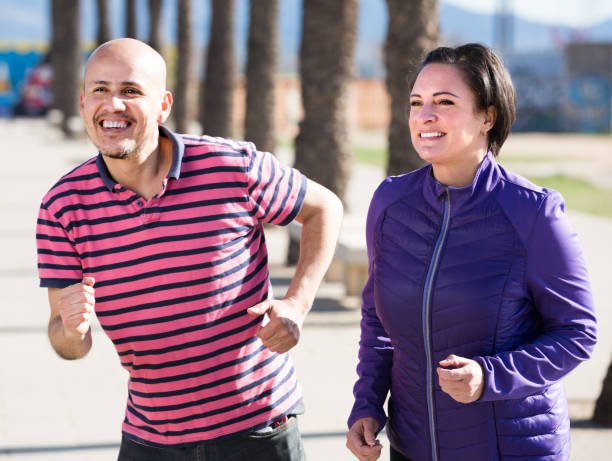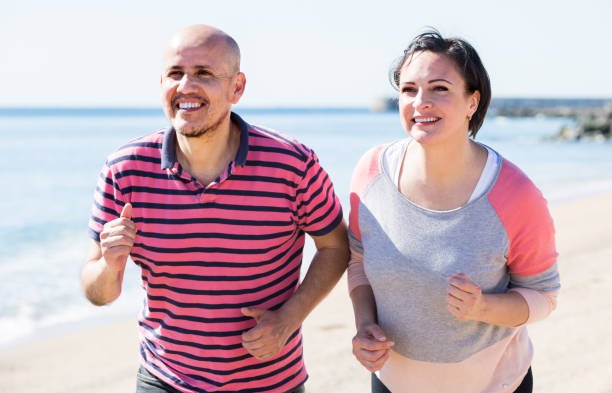Let’s be honest. We all love the idea of a simple solution that works. No fancy gym membership. No complicated equipment. Just you, your shoes, and the sidewalk. That’s where walking comes in.
Walking is one of the most underrated yet powerful tools for fitness, weight loss, and overall health. But how long does it take before you start seeing real changes in your body and your energy?
Immediate Effects of Walking on the Body

Yes, even one walk can make a difference. A short 20-30 minute stroll can trigger several positive changes right away:
- Increased energy: Walking gets your blood flowing and oxygen moving. You’ll feel more awake and alert, even if you started off feeling groggy or sluggish.
- Mood boost: Thanks to the release of endorphins (your brain’s feel-good chemicals), walking can ease stress, reduce anxiety, and help you feel more balanced emotionally.
- Looser joints: If you’ve been sitting all day, walking helps lubricate your joints, reducing stiffness and helping you move more freely.
So if you’re wondering whether walking is “worth it,” the answer is: Yes. Every step counts.
Within a Few Days of Walking Daily
Stick with a daily walking routine for just 3–5 days and here’s what you might notice:
- Better sleep: You’ll fall asleep faster and sleep more deeply. Walking helps regulate your circadian rhythm and reduces restlessness.
- Appetite control: Light cardio like walking helps regulate hunger hormones, making you less likely to overeat.
- Improved digestion: Your digestive system starts working better, especially if you walk after meals.
This is your body starting to adjust, and the internal benefits are already building
Results After 2–3 Weeks of Consistent Walking

This is where things get exciting.
- Walking for weight loss becomes more noticeable. Your clothes might fit looser. You’re burning calories each day, especially if you’ve also cleaned up your diet.
- Heart health improves: Blood pressure may begin to lower, cholesterol levels might start to balance out, and your resting heart rate drops slightly—signs of a stronger cardiovascular system.
- Stronger muscles: You’ll feel more toned in your legs, glutes, and even your core—especially if you walk briskly or on an incline.
- More endurance: You’ll be able to walk longer distances without getting winded. You might even start craving your daily walk!
This is also a great time to start mixing in intervals—like alternating between slow and fast walking—to boost calorie burn.
After a Month or More
If you’ve made walking part of your healthy lifestyle, the long-term benefits really kick in:
- Significant weight loss (if paired with proper diet): Some people lose 5–10 pounds in their first month or two, especially if they were previously sedentary.
- Mental clarity and focus: Walking supports brain health. You’ll find it easier to concentrate, solve problems, and stay positive.
- Lower risk of chronic illness: Regular walkers reduce their risk of heart disease, stroke, type 2 diabetes, and even certain types of cancer.
- Better joint health: Contrary to what people think, walking actually protects your knees and hips, keeping them mobile and less prone to stiffness or arthritis.
Stronger immune system: Studies show that regular walking lowers your chances of catching colds and infections
So… How Long to See Results from Walking?
Here’s a general timeline:
| Timeframe | What You May Notice |
| Day 1 | Mood boost, more energy |
| 3–5 Days | Better sleep, appetite control |
| 2–3 Weeks | Weight loss begins, stronger legs, improved stamina |
| 4 Weeks+ | Noticeable body changes, better fitness, less risk of disease |
Of course, results vary depending on how often, how long, and how intensely you walk—as well as your diet and other habits.

Tips to Maximize Your Walking Results
If you want to get the most out of your walks, follow these simple tips:
- Walk briskly – Aim for a pace that makes it slightly hard to talk but not so hard that you’re gasping.
- Set a daily goal – 30 minutes a day is a great place to start. You can break it into two 15-minute walks if needed.
- Use a fitness tracker or pedometer – Seeing your steps add up is motivating. Try to hit 7,000–10,000 steps daily.
- Walk after meals – It helps digestion and balances blood sugar.
- Change the route – Walking in new places keeps things interesting. Try parks, trails, or neighborhoods.
- Listen to music or podcasts – It makes the time fly and turns your walk into “me time.”
Stay hydrated – Drink water before and after your walks, especially in hot weather
Walking Isn’t Just Exercise—It’s a Lifestyle
You don’t need to run marathons or crush extreme workouts to get in shape. Walking daily is enough to change your body, your mind, and your mood.
But consistency is the real game-changer. Walking for a few days is nice. Walking for weeks is better. Walking for life? That’s where the transformation happens.

Final Thoughts
If you’re wondering when walking will start to show results, the answer is: almost immediately. But the real magic happens when you make it part of your routine. Over time, the benefits of walking go beyond the physical. You’ll feel healthier, think clearer, and live better.
So don’t overthink it. Tie your shoes. Get outside. And start walking your way to a stronger, healthier you.

